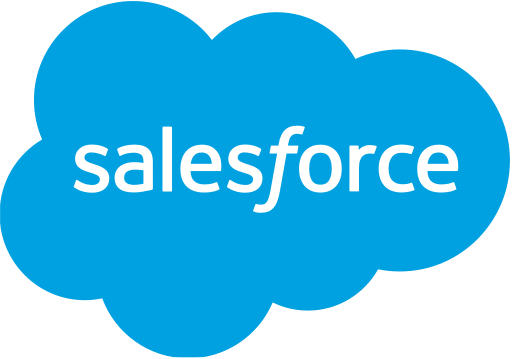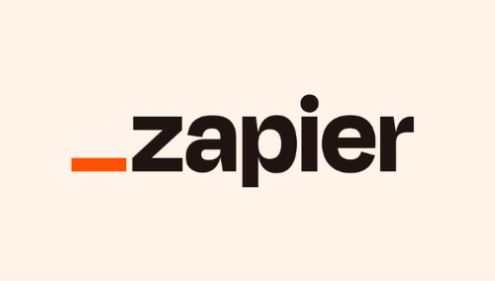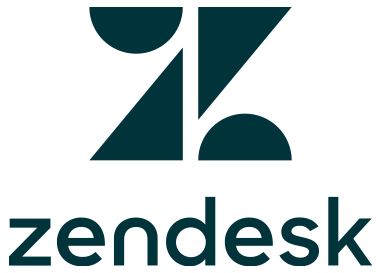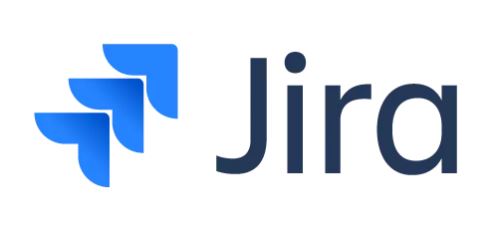Turn every incoming call into a booked opportunity with a 24/7 AI receptionist built for HVAC companies. AnswerBug handles scheduling, collects job details, and routes urgent calls so your technicians stay focused on service.
AI Answering Service for HVAC That Never Misses a Service Call
Call our AnswerBug Demo to speak to our AI Receptionist for more info: 972-944-0311
✓ Free Trial ✓ No Credit Card Required ✓ Phone Support Included

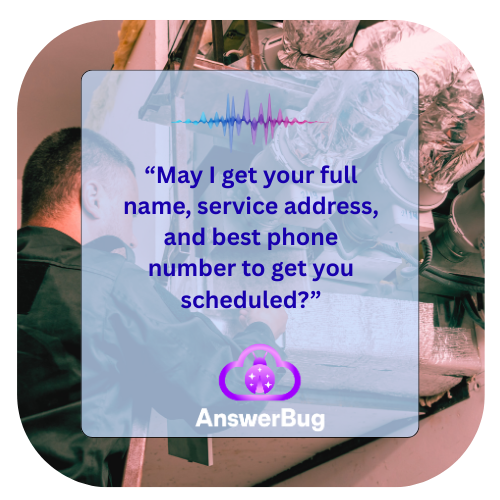
0
%
Average Missed Call Rate
For HVAC Companies in the USA
0
%
Win Rate
For HVAC Contractors that respond to the first call
Unanswered HVAC Calls Cost You Booked Jobs
Homeowners don’t wait around when their air conditioner stops working or their heater fails. They call multiple HVAC companies back-to-back and book with the first business that answers live. Every missed call is a missed chance to schedule a service visit, provide emergency help, or secure a new installation job. An AI answering service for HVAC contractors ensures your company responds instantly to every inquiry, capturing job details, prioritizing urgent calls, and scheduling appointments around the clock without increasing front-office payroll.
Why missed calls hurt HVAC businesses
Customers move on fast when they hear voicemail or experience long hold times, often booking with competitors within minutes.
Office staff can’t always cover peak volume, after-hours requests, or weekend emergencies, resulting in unanswered calls when demand is highest.
AnswerBug Stops Missed Calls from Becoming Missed Jobs
AnswerBug AI removes one of the biggest revenue leaks HVAC companies deal with: unanswered phone calls. When homeowners can’t reach a live person, they immediately move on to the next contractor who will pick up. With a 24/7 AI receptionist answering your phones instantly, every service request is handled the moment it comes in, ensuring potential customers get help before they ever have the chance to call a competitor.
Beyond call answering, AnswerBug actively qualifies incoming leads by gathering job details, identifying urgency, and collecting contact information. It can schedule service appointments directly or route high-priority emergency calls to your team in real time, so your technicians stay focused on field work while intake runs smoothly without administrative bottlenecks.
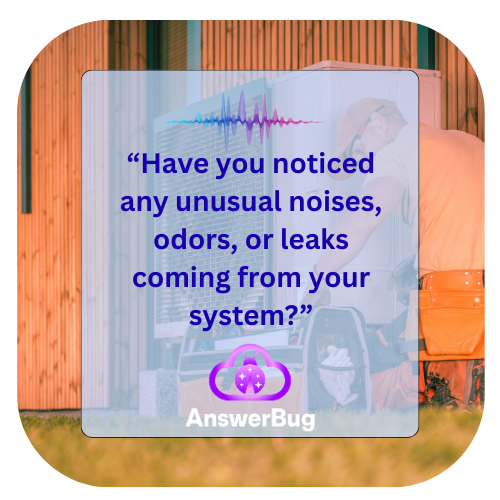
- Answers every call immediately, day or night, preventing valuable service requests from reaching voicemail.
- Captures and qualifies new HVAC jobs automatically for faster dispatching and follow-ups.
- Reduces front office workload and staffing needs while delivering consistent, professional call handling at scale.
How Much Revenue Are Missed Calls Costing Your HVAC Business?
Every unanswered call is a homeowner or business owner who needed immediate service but couldn’t reach your team. In HVAC, speed is everything. When phones go unanswered, customers usually book with the next contractor who picks up, and that job is gone for good. The Missed Call Calculator was built to reveal the real financial impact these lost opportunities create for your company by turning missed calls into tangible revenue numbers you can clearly understand.
To use the calculator, enter the number of calls you believe your HVAC business misses during a typical week along with the average revenue from a completed service call or installation. The tool estimates how many booked jobs may be slipping away and calculates the potential revenue lost monthly and annually. Within seconds, you’ll see how improving coverage with an AI receptionist for HVAC can directly increase booked appointments, maximize technician schedules, and recover revenue that would otherwise be lost to voicemail or delayed callbacks.
Missed Call Calculator
Calculate the true cost of every call that goes to voicemail.
$
Conservative (10%)
Aggressive (100%)
*This assumes not every caller becomes a customer. Adjust based on your team's sales performance.
Potential Lost Revenue (Yearly)
$78,000
That's $6,500 lost every month
The Benefits of an AI Answering Service for HVAC Contractors
An HVAC business thrives on speed, availability, and efficient intake, yet phones often ring most when staff are busiest or after hours. An AI answering service for HVAC contractors ensures calls are never missed while your technicians remain focused on service work instead of phone duty. Every inquiry is handled consistently, professionally, and immediately, creating smoother customer interactions and more reliable job booking. The result is stronger conversion from inbound calls, fuller schedules for your crews, and increased revenue without the burden of expanding front-office staff.
24/7 Answering
Emergency breakdowns and urgent comfort issues don’t happen only between 9 and 5. An AI receptionist provides nonstop coverage so homeowners can always reach your business when they need help. Calls are answered instantly during evenings, weekends, holidays, and peak season without additional payroll expense. This round-the-clock availability dramatically increases captured service requests that would otherwise go to competitors who answer live.
Faster Client Response Times
The moment a customer dials your number, speed determines whether you win the job. AI answers immediately, eliminating hold times, voicemail, and delayed callbacks that cause prospects to move on. Rapid response builds trust and shows professionalism before a customer even meets your technicians. Faster answers lead to higher booking rates and shorter lead-to-dispatch timelines.
Handles Multiple Calls Simultaneously
Busy months or marketing campaigns can flood HVAC offices with overlapping calls that no human staff can manage simultaneously. AI fields unlimited calls at once, ensuring no customer is ever placed on hold or sent to voicemail because of volume. Each caller receives direct, personalized attention regardless of how many others are calling. This ability keeps your lead flow steady during the busiest demand spikes of the year.
Reduced Admin Workload
An AI answering service automates intake by collecting names, phone numbers, addresses, service needs, and urgency levels before routing or scheduling jobs. This removes repetitive call-handling tasks from your office team’s daily workload. Staff can focus on dispatch coordination, invoicing, and in-house customer service instead of nonstop phone answering. Automation minimizes intake errors, improves organization, and speeds internal workflows.
Lower Staffing Costs
Rather than hiring additional support staff or paying overtime during peak seasons, AI provides scalable coverage at a predictable flat cost. There are no training requirements, shifts to manage, or employee turnover concerns to deal with. Your intake capacity expands instantly without payroll increases or management complexity. Over time, this dramatically lowers the cost per booked job compared to traditional staffing models.
Improved Customer Experience
Customers appreciate fast, effortless interactions when they need HVAC service, especially during stressful emergencies. An AI receptionist ensures courteous greetings, clear communication, and immediate assistance on every call. Patients experience smoother scheduling, fewer delays, and professional call handling regardless of when they reach out. This consistent experience builds confidence in your brand and encourages repeat service and positive reviews.
Work With UsFeatures: AnswerBug AI Virtual Receptionist for HVAC
AnswerBug can do more than just answer basic questions. Here are a few of the features that empower your AI answering service
for heating and air conditioning companies to deliver a professional experience and convert more callers into booked jobs.
Purpose Built for HVAC Call Handling
An AI answering service for HVAC contractors is designed to match the high-urgency pace of home comfort businesses, where customers expect immediate help when systems fail. Studies from CallRail show that missed calls are one of the largest revenue leaks for service providers, especially during peak seasons when staff cannot keep up with inbound volume. AnswerBug ensures every call is answered live, capturing job requests before homeowners move on to competitors who respond first.
The platform follows HVAC-specific intake workflows that collect essential information including system issues, service addresses, urgency level, and contact details before routing or booking appointments. Research from ServiceTitan highlights how faster intake and immediate scheduling significantly increase job booking rates across the trades. By qualifying requests during the call, AnswerBug removes manual intake backlogs and accelerates dispatch readiness.
Real-time scheduling allows appointments to be secured immediately instead of waiting for office callbacks that often result in lost jobs. Customers hang up with confirmed service times and automated text confirmations, increasing confidence and reducing no-show cancellations.
Multilingual call handling expands accessibility across diverse customer bases without increasing payroll, allowing HVAC companies to serve more households while maintaining consistent call quality.
As demand surges during heat waves, cold snaps, or aggressive advertising periods, AnswerBug scales instantly to manage unlimited concurrent calls. Your business maintains immediate response speed at all times without staffing strain or hold queues, ensuring every service opportunity is captured regardless of volume.
In addition to intake and scheduling, AnswerBug creates detailed call summaries so your team has full visibility into each customer interaction. Performance reporting allows you to track call volume, booking rates, and lead quality to better measure marketing ROI. The platform integrates seamlessly into your existing dispatch and office workflows without requiring complex technical setup. This gives HVAC businesses a simple, scalable way to improve responsiveness, protect revenue, and grow more efficiently.
Frequently Asked Questions
AnswerBug answers incoming service calls, gathers job details, and schedules appointments or routes urgent issues to your team automatically. Every call is documented and delivered to your office with complete intake notes.
Yes, the AI can book service calls in real time using your availability rules so customers leave with confirmed appointments. Automated text confirmations are sent immediately after booking.
AnswerBug can identify emergency situations based on caller responses and follow custom escalation workflows. Urgent calls can be routed directly to live staff or on-call technicians.
Yes, AnswerBug answers unlimited calls simultaneously so surge periods never result in hold times or voicemail. Even during seasonal spikes, every caller receives immediate attention.
The AI is designed to sound natural, friendly, and conversational so calls feel human and professional. Most callers simply experience fast, accurate service rather than automated interactions.
Yes, AnswerBug gathers service addresses, system issues, urgency level, and contact information during the call. This allows your dispatch team to receive fully qualified job requests instead of vague voicemail messages.
Yes, the AI can communicate with callers in multiple languages without additional staffing. This expands access and helps HVAC businesses serve a broader customer base.
No, it supports your team by handling phones and intake tasks so staff can focus on scheduling, dispatch coordination, and customer follow-ups. The AI works alongside your team rather than replacing them.
Most HVAC businesses can start immediately with a basic version and be fully onboarded within just a few days. Once scripts and call workflows are set, AnswerBug can begin answering complex calls.
Flexible pricing for your HVAC Business
Starter
For small businesses that need help handling phone calls.
$49
Per month includes 200 minutes
- Customized AI Receptionist
- FAQs & Knowledge Base
- Message Taking
- SMS Appointment Links
- Email & SMS Notifications
Pro
For growing businesses looking for more advanced AI features.
$99
Per month includes 500 minutes
- Everything in Basic
- Call Transfers
- Advanced Texting
- Integrations
- Manage Multiple AI Receptionists (add on)
Easy Setup
Create your AI Answering Service For HVAC Contractors
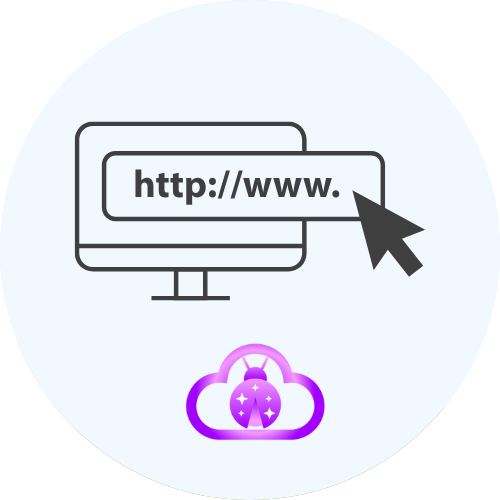
01
Create Your Account
Add your website and training material and AnswerBug AI immediately starts training on your firm.
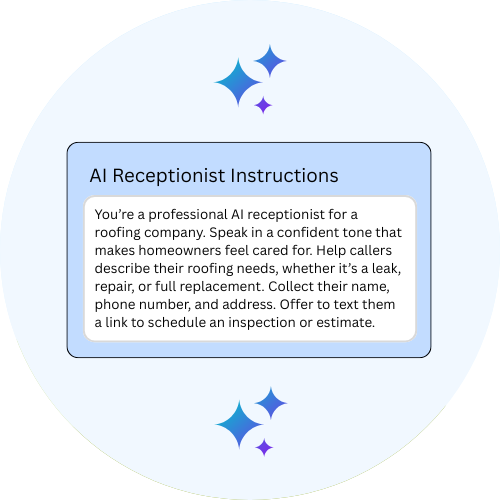
02
Tweak Your Instructions
Add a greeting, commonly asked questions, and custom instructions for alerts, texting, call transfers, and appointment scheduling.
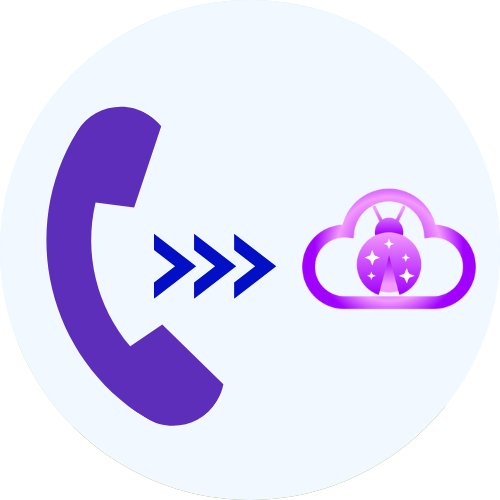
03
Forward Your Calls
Setup call forwarding or VOIP rules for when AnswerBug should answer your calls. (such as after 3 rings, after-hours, etc)













